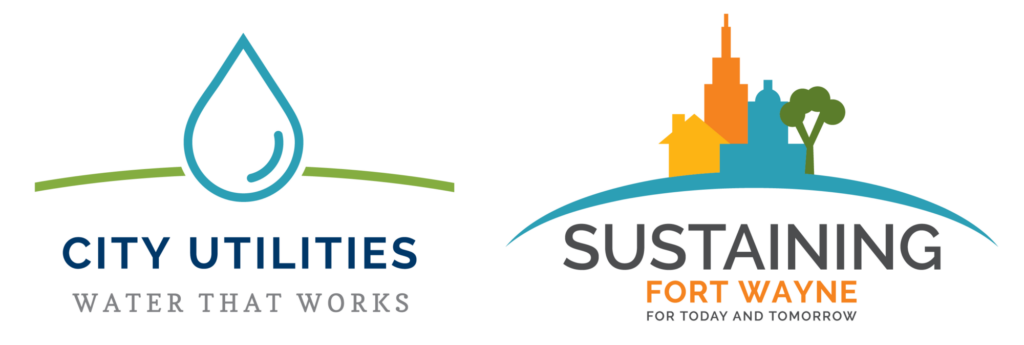For immediate release: September 19, 2023

Fort Wayne, Ind. – In a pioneering move toward environmental sustainability and improved resiliency , Mayor Tom Henry, City Utilities’ staff and neighborhood leaders celebrated progress on the installation of floating solar panels on the Water Pollution Control Plant’s wet weather storage ponds. The panels represent an innovative use of solar technology, one of few such applications across the country, making Fort Wayne a leader in providing unique and beneficial services to the public.
The solar panels are part of a comprehensive strategy, one that research shows millions of dollars in savings for decades to come. The environmental benefits are equally dramatic, ultimately reducing greenhouse gas emissions and the carbon footprint of the City’s water and sewer facilities by nearly 20 percent.
The solar panels are a component of a much larger and multifaceted energy project that’s been in the making for over ten years. The panels will become part of a microgrid to supply power to the water and sewer plants. A microgrid is a small network of power users with a local source of supply that is usually attached to a centralized national grid but can also function independently. The City Utilities’ microgrid will use a complex network of solar panels, battery storage, captured methane gas, and natural gas to generate energy for the Pollution Control Pant and the Water Filtration Plan.
This microgrid system will reduce costs and add additional backup power capacity during storm-related emergencies that can cause power outages.
“Our ongoing commitment to maximizing resources, reducing costs, protecting the environment, and sustaining Fort Wayne is evident today. This proactive effort to place solar panels on our wet weather ponds will soon generate power to energize critical facilities and store backup electricity to keep necessary services up and running if outages occur,” said Mayor Henry. “We must continue to be mindful of how we care for the environment. My administration is at the forefront of activities to position Fort Wayne an as efficient energy consumer and implementor of programs to reduce our carbon footprint.”
Today’s work is still in the early stages, with the project completion and power generation slated to begin in late 2024. To date, 2,464 panels of the planned 12,320 solar panel installations are complete.
“City Utilities is embarking on a groundbreaking journey towards a greener, more resilient future. This innovative power generation system underscores our commitment to environmental sustainability and cost management while positioning the organization as a leader in wastewater treatment and clean energy integration,” noted Kumar Menon, Director of City Utilities.
This venture is the result of years of research and study by City Utilities’ staff on ways to make the utility and the community more resilient and cost-efficient. Notable from the research, solar panels floating on water can be installed closer together allowing them to produce roughly 15 percent more power than a land-based solar of a similar size.
“Nearly everything we do at City Utilities involves efforts to sustain our community with components that protect the environment,” stated Matthew Wirtz, City Utilities Deputy Director of Engineering. “Our research investigated system efficiencies today and into the future, both environmentally and financially. We are confident we will increase reliability with our microgrid and see significant savings, avoiding projected electricity costs of $8-10 million in the first 20 years of the program and $60-70 million over 40 years.”
The microgrid system is one of the action items from Sustaining Fort Wayne, the City’s Climate Action and Adaptation Plan (CAPP).
“This is a unique and important contribution to our Sustaining Fort Wayne efforts,” said Doug Fasick, Chief Sustainability Officer for the City of Fort Wayne. “Once operational, the microgrid project will reduce greenhouse gas emissions and the carbon footprint of these facilities by 4,600 tons a year, which is about 20 percent. That equals the emissions produced by 1,161 gasoline-powered vehicles in one year. That’s a tremendous win for the environment, our residents and the City of Fort Wayne.”
The microgrid will connect facilities electrically to distribute power as facilities peak at different times. The solar panels will provide a large portion of average daily power needs during sunlight hours, and with an extensive battery storage system, will be able to store power for use during cloudy and low sunlight periods.
Indiana-based Solential Energy is installing the panels.





